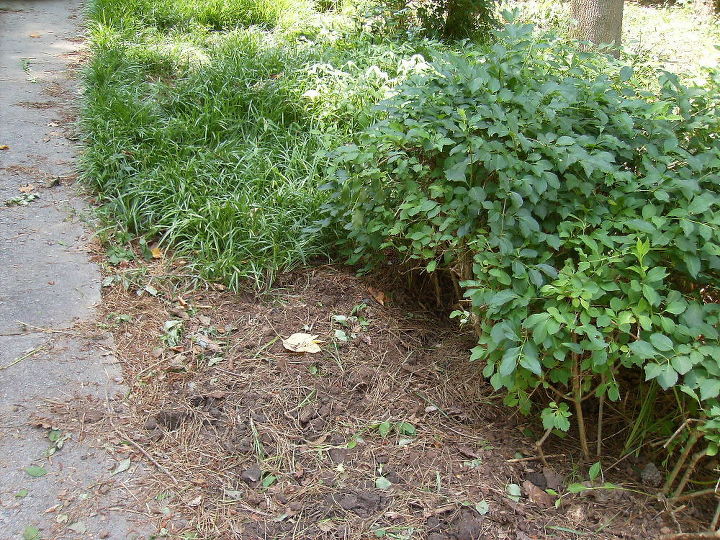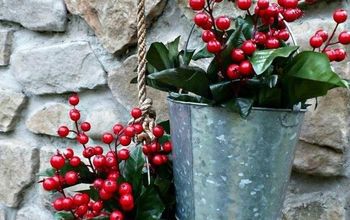Get rid of weeds and dandelions in a yard?

Related Discussions
GNATS - How to get rid of them?
Somehow my house and garden got tiny gnats that killed my fuchsia plant and fly everywhere. I have tried ALL the Web recommendations - soap and oil dishes, sand in th... See more
Marigolds growing! Should I pinch the buds?
My marigold plants are growing. I heard that pinching the buds until Autumn will allow them to grow without killing the plant. Is this true?
Growing garlic
Growing our first garlic, should we wait until the leaves are drying out before we pick it? Husband picked first one today along with our first potatoes.
How to keep mice out of your garden?
Hi everyone, I have mice in my garden destroying my vegetables and I have also noticed them in the barn and shed. Please can someone tell me how to prevent them from ... See more
What's the best flower/plant to grow in Texas?
I know that opinions vary, but what's your opinion?!I have great luck w Rosemary plants. Green all year long.
How to get rid of weed stickers in yard
Can't walk in yard without shoes anymore unless I was a bunch of thorn stickers in your feet how to I get rid of these ? Every year they seem to get worse they seem t... See more
What's an effective way to get rid of liriope? My entire front yard
used to be liriope, but dug it all up maybe 5 yrs ago. Planted shade grass which lasted 2 seasons. Then plowed up the yard again and now it's tree mulch with azaleas,... See more




Here's a recipe for weed killer:
2 cups white vinegar
¼ cup salt
Squirt of dawn
Mix in a spray bottle. If you have a larger area, you can mix in a garden sprayer with larger quantities. Use when it will not be raining for a few hours so that it isn’t washed away.
If you don't want surrounding grass to be killed you can either apply with a dropper or you will have to pull them.
I usually put Scotts Weed n Feed on my lawn in the spring and in the fall. I also use an old fashioned dandelion puller which works better than the herbicide. True Value and Amazon have the Grandpa's Dandelion Puller.
I would try the vinegar and Dawn method (above). You can also use a trowel to dig up the weeds.
Weed & Feed is great!
For paver/stone/gravel patios
I use one cup of vinegar, one cup of salt to two gallons water in a garden sprayer. Saturate the weeds till dripping. Do not use on lawn or in garden. Will kill everything.
Use combination weed and feed fertilizers for the best results on lawns
Feeding the grass and controlling weeds are two components of homeowner strategy for having a great looking lawn. Dandelions may be pretty yellow flowers, but they can easily take over an entire lawn. These plants have long tap roots that make pulling them up or digging them out almost impossible. The key is to use a weed killer that enters through the leaves and circulates through the entire plant to the root. Application of a combination product to kill weeds and fertilize the lawn results in grass that is thick, dense, and healthy.
I like to use Specrtacide Weed and Feed in a hose end sprayer. No mixing, no mess. I have tried different brands and found Spectracide Weed and Feed works the best for me.
Hello trying to eliminate weeds is an ongoing process that needs constant attention. The following points might be helpful to review. Hope this helps
Management
Cultural control in ornamental beds
Prevent going to seed; hand pulls easily. Do not compost plants with seed heads.
In Lawns
Vinegar with a dropper works well
You could use this home made spray, just be sure to spray only on the weeds you want gone.
https://countrylivinginacariboovalley.com/homemade-poison-ivy-and-weed-killer-that-really-works/
I also use vinegar with a dropper. Easier to get on the weed and not on any surrounding plants
For spot treating I just use plain white vinegar and a turkey baster from the dollar store. If applied in bright sunlight they die pretty quickly, then dig out to get the roots. I perform "weed patrol" for 10 or 15 minutes twice a day while playing with the pets. Keeps it all in control without sacrificing every Saturday morning to weed.
The vinegar you’d need for this is horticultural and it would take several applications to work. Salt will kill everything and make your soil barren for a long time. Best bet is to pull them, getting the entire root.